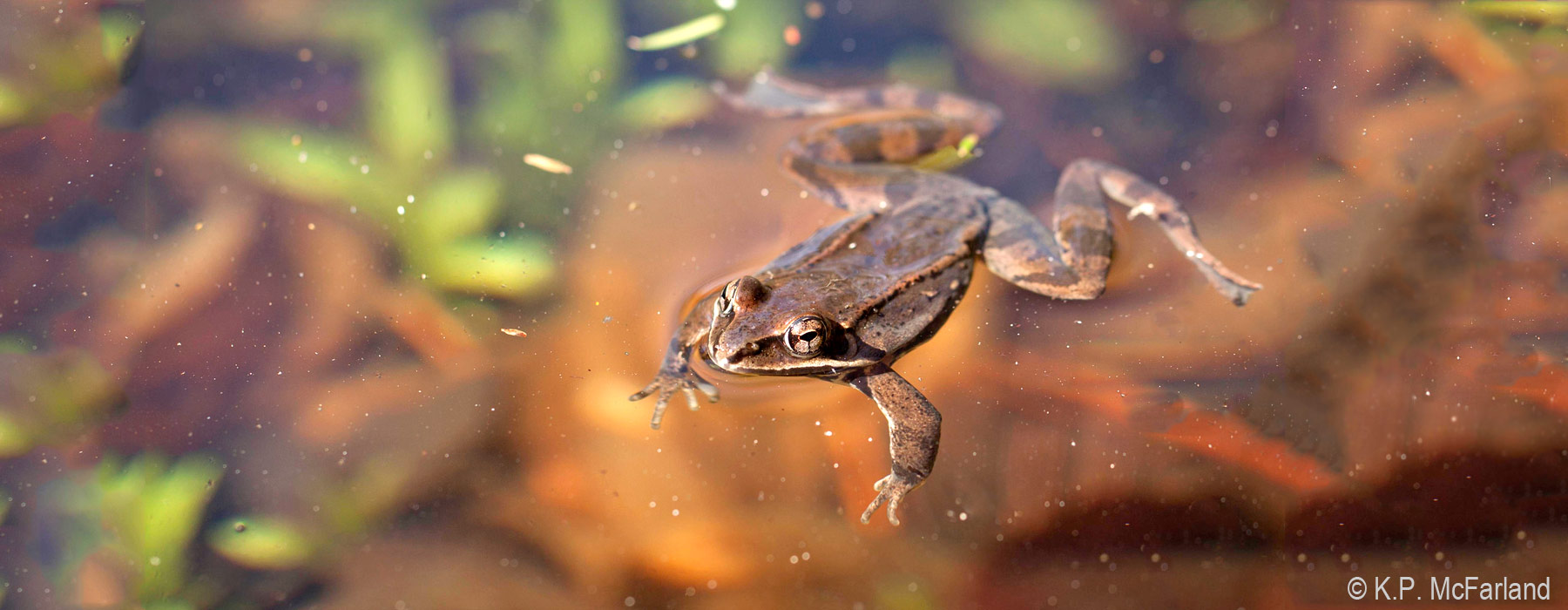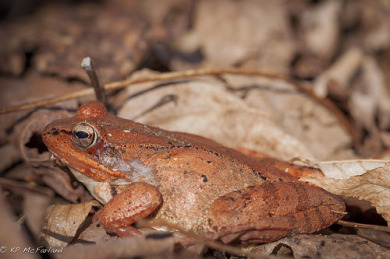In winter Wood Frogs can be frozen rock hard. But as the ice clears from the ponds and the ground thaws, the call of mating season begins.
When spring rains and melting snow begin to seep into the ground, Wood Frogs are aroused from their frozen state and undertake their annual migration to breeding pools. Remarkably adapted to the cold, it is not unusual to find individuals scampering across old snow or swimming in water amidst ice.
During the fall and early winter when ice begins to form inside the body of a Wood Frog, glucose levels increase in its blood by as much as 200-fold in just eight hours. This “antifreeze” effect preserves tissues and organs through the long winter.
Ice penetrates throughout the abdominal cavity encasing all the internal organs. Large flat ice crystals run between the layers of skin and muscle, and frozen lenses make their eyes white. Their blood stops flowing and as much as 65% of the frog’s total body water is converted to ice. Breathing, heartbeat, and muscle movements all stop and the frozen frog is in a virtual state of suspended animation until spring thaw.
Wood Frogs are explosive breeders, and most mating in a given pool takes place over just a few days. The loud duck-like calls of males are often a key to finding these pools. Females often deposit their gelatinous egg masses communally. The center of an egg mass may be up to 5°F warmer than the surrounding water, speeding development. Eggs often become covered by symbiotic algae (Oophilia ambystomatis) that enhance the oxygen supply to developing embryos in exchange for nutrients and carbon dioxide.
By mid- to late-summer nearly all juvenile frogs have left the pool as it dries up. Over 70% of these will succumb to predation before reaching adulthood. The rest will be frozen in time until spring comes again.


